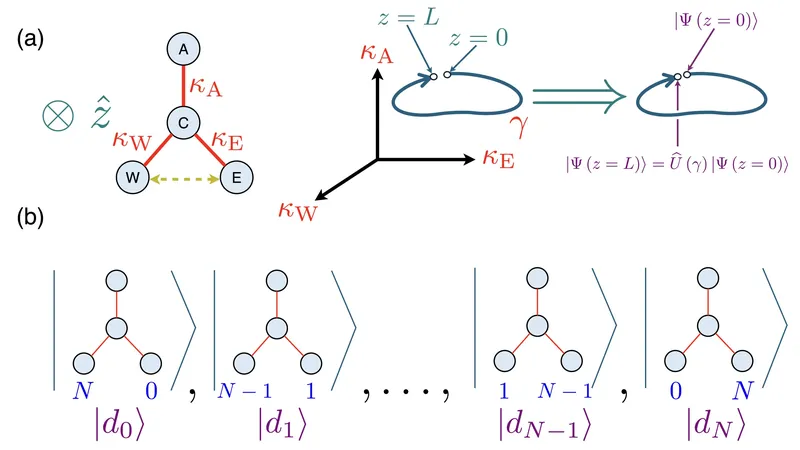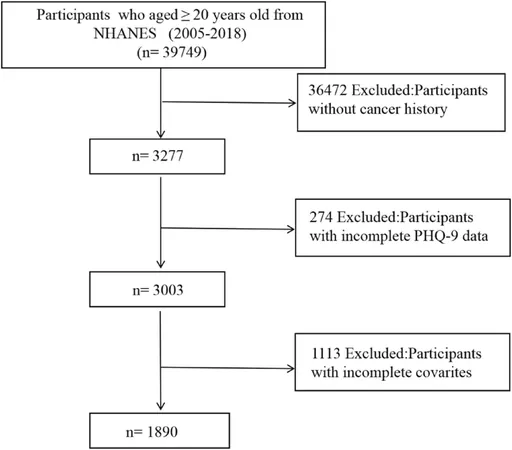
Revolutionary Breakthrough: New Method Allows Photon Entanglement Without Measurement!
2025-03-26
Author: Mei
Revolutionary Breakthrough: New Method Allows Photon Entanglement Without Measurement!
In an exciting development from researchers at Georgia Tech, a groundbreaking protocol has been unveiled that enables the generation of quantum entanglement between photons without relying on traditional quantum measurement methods. This innovation could drastically reshape the landscape of photonics-based quantum computing, heralding a new era of technological advancements.
"Our findings suggest a feasible pathway to constructing quantum computers that harness light's innate properties by exploiting this type of entanglement," explained Chandra Raman, a physics professor involved in the research, which has recently been published in the prestigious journal *Physical Review Letters*.
Quantum computers are celebrated for their potential to vastly outperform classical computers, promising unmatched speed and efficiency in processing information. At the core of this technology lies the phenomenon of entanglement, a quantum resource that enables complex computational tasks.
However, while light—specifically photons—has long been touted as the perfect medium for quantum computing, it comes with its own set of challenges. The nature of photons poses a significant hurdle: they do not interact with one another under normal circumstances. "When dealing with multiple photons, getting them to interact is incredibly challenging; they tend to pass by each other without any interaction," noted Aniruddha Bhattacharya, a postdoctoral researcher on the project. "This key discovery allows us to entangle photons in a systematic, controllable, and deterministic manner."
The innovative protocol introduced by the researchers employs a mathematical construct known as non-Abelian quantum holonomy, which facilitates the entanglement process without the need for quantum measurements. This approach can be realized with on-chip photonic devices, implying that it may pave the way for highly scalable and integrable photonic quantum computers.
The extraordinary implications of this research extend far beyond theoretical frameworks. Photonic quantum computers not only exhibit robust functionality at room temperature, but they are also lightweight and can be seamlessly integrated into existing quantum communication infrastructures. This versatility positions photonics as a formidable contender in the ongoing race towards advancing quantum technology.
As quantum computing emerges as the cornerstone of future innovations spanning various industries—from cryptography to artificial intelligence—the ability to manipulate photons may unlock unprecedented capabilities and applications. This breakthrough signifies not just a triumph in the world of physics, but also a pivotal moment that could revolutionize how we harness the power of light and quantum mechanics in the realm of computing.





 Brasil (PT)
Brasil (PT)
 Canada (EN)
Canada (EN)
 Chile (ES)
Chile (ES)
 Česko (CS)
Česko (CS)
 대한민국 (KO)
대한민국 (KO)
 España (ES)
España (ES)
 France (FR)
France (FR)
 Hong Kong (EN)
Hong Kong (EN)
 Italia (IT)
Italia (IT)
 日本 (JA)
日本 (JA)
 Magyarország (HU)
Magyarország (HU)
 Norge (NO)
Norge (NO)
 Polska (PL)
Polska (PL)
 Schweiz (DE)
Schweiz (DE)
 Singapore (EN)
Singapore (EN)
 Sverige (SV)
Sverige (SV)
 Suomi (FI)
Suomi (FI)
 Türkiye (TR)
Türkiye (TR)
 الإمارات العربية المتحدة (AR)
الإمارات العربية المتحدة (AR)